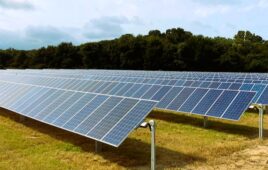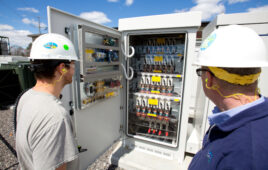This installation tip was provided by David Lopez, business development and sales manager at Panasonic Solar
Solar panels are meant to absorb the sun’s rays, not an installer’s body weight. Kneeling or walking on a solar panel may not break the protective glass, but it can create tiny cracks in the cells underneath, causing invisible damage and beginning the downhill spiral to fading performance. These small cracks—microcracks—are one of the main reasons for solar module degradation and failure.
 Once a cell is cracked, its power output decreases a little more every year. Over time, the whole panel becomes less effective and shows the effects of permanent damage.
Once a cell is cracked, its power output decreases a little more every year. Over time, the whole panel becomes less effective and shows the effects of permanent damage.
Solar cells are made of a super-thin layer of silicon (around 150 micrometers), making them highly fragile. That’s why solar modules receive a strong tempered outer glass covering that protects them from the environment.
Still, issues can happen, bypassing that glass covering. Damaging microcracks are not always visible to the human eye. An electroluminescence (EL) test is required to detect microcracks in a solar cell.
The main causes of microcracks are:
- Manufacturing: Sometimes solar modules come from the factory with microcracks. High temperatures used during soldering of busbars and lamination processes create stress on cells that can cause microcracks. A trusted manufacturer that performs strict quality assurance testing should not be shipping modules with microcracks.
- Mechanical loads and improper mounting: A solar module is designed to hold a mechanical load of up to 5,400 Pa (112 psf). However, this load varies depending on where the module has been clamped. Clamps installed in a weaker location of the module can cause load resistance to be as low as 2,400 Pa (50 psf). If an installer uses the wrong mounting locations, cells can potentially suffer not only microcracks but also broken glass.
- Installer error: Negligent installers may walk on or apply strong force to the module surface during installation without realizing they can cause microcracks. Careless behavior can seriously weaken panel performance and lead to dissatisfied customers.
Panasonic solar cells use a manufacturing process that makes them smaller, stronger and more flexible. All Panasonic modules go through EL testing to ensure they’re free of microcracks, but it is critical installers follow manufacturer mount location guidelines to ensure sturdy, secure installations.




Tell Us What You Think!